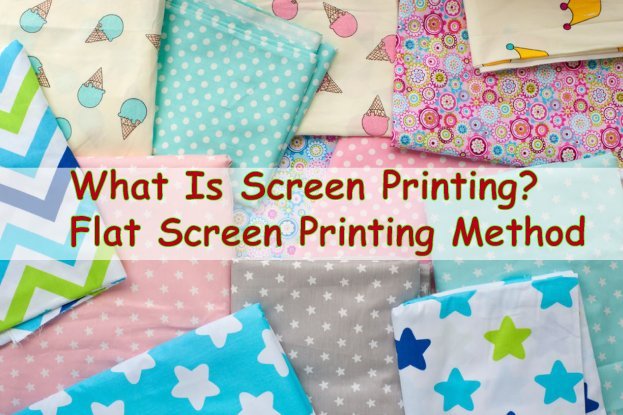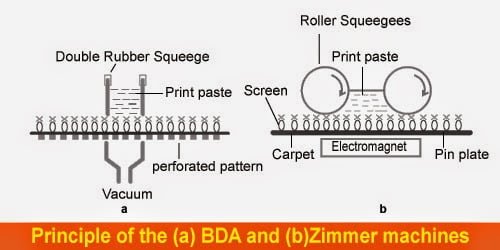Roller Printing: Working Procedure, Advantages and Disadvantages
Last updated on August 7th, 2023 at 11:47 pm
Working procedure of Roller Printing
Roller printing also referred to as intaglio or machine printing. The technique dates from the end of the 18th
century (Scotland: James Bell) and has resulted in the disappearance of hand printing, which is time consuming printing technique. The technique of roller printing is especially used for very large batches but faces great competition from rotary screen printing.
The oldest mechanized method for continuous printing represents only about 16% of print production today, and is declining. Roller printing is capable of producing very sharp outlines to the printed pattern which is especially important for small figure. The maximum design repeat is the circumference of the engraved roller.
The design is engraved onto copper rollers, a separate roller for each color. The rollers are mounted against the large main cylinder, around which the fabric travels together with a resilient blanket and a protective back grey. The printing paste is located in a trough. A transfer roller runs partly immersed in the paste and in contact with the engraved roller. A doctor blade, scraps away all of the paste except for that contained in the engraving. A cleaning blade on the other side scraps away any lint picked up from the fabric. The pressure of the engraved roller against the fabric causes the design to be transferred. Any excess paste which is squeezed through the fabric is taken up by the back grey. This protects the blanket and prevents the design from being smeared.
Advantages and Disadvantages of Roller Printing
Roller printing is especially suited for printing large batches. Speeds can amount to approximately 100 meters per minute. Moreover, roller printing can be used for very fine printing.
For small batches, however, the changing times between printing of the various batches are so considerable in the complete production process, the efficiency (cost effectiveness) in machine utilization can drop to 50%. The changing time is necessary for adjusting and preparing the machines for a new series.
Another advantage is the crush effect. Applying several colors in one drawing is achieved by using several printing rollers. Each printing roller applies one color. During the printing process, each color will be “crushed” by the following rollers as many times as there are colors left to be applied. Consequently, the color will be pushed more and more through the fabric to be printed. Deep colors are hard to obtain, which benefits screen printing. There may be a reduction in color strength of up to 50%.
In roller printing, it is essential to apply the light colors before the darker ones because traces of the preceding color can be carried forward in to the following color. Engraving the printing rollers is an expensive operation which raises the price of the roller printing technique considerably.




